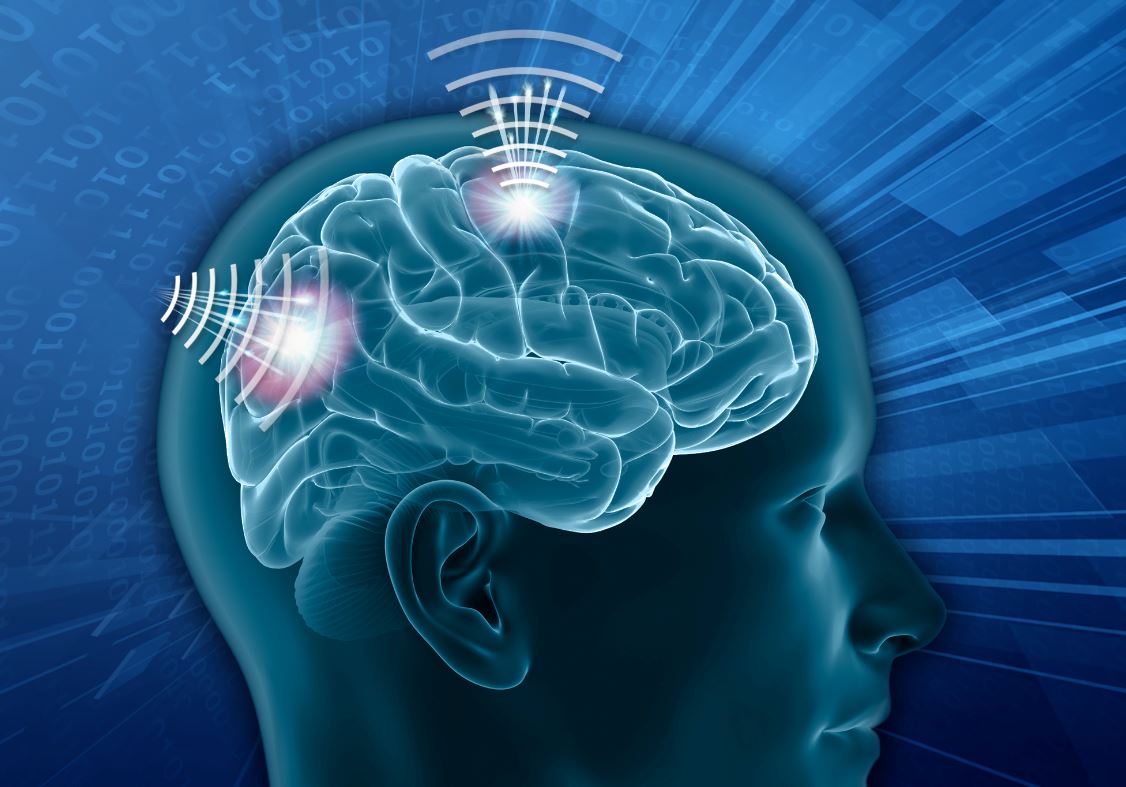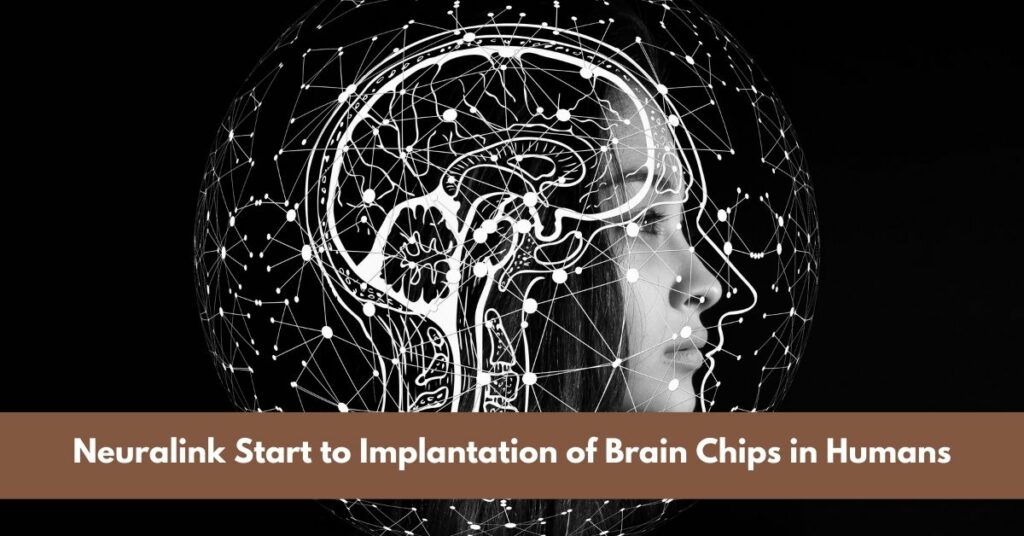Elon Musk is a renowned entrepreneur, visionary, and technologist. Born on June 28, 1971, in Pretoria, South Africa, Musk has made significant contributions to various industries, including space exploration, electric vehicles, renewable energy, and artificial intelligence. He is the CEO and lead designer of SpaceX, CEO and product architect of Tesla, Inc., CEO of Neuralink, and co-founder of companies like PayPal and The Boring Company. Known for his bold ideas and relentless pursuit of innovation, Musk has become one of the most influential figures in the tech industry.
Neuralink is a cutting-edge neurotechnology company co-founded by Elon Musk in 2016. The company aims to develop advanced brain-machine interface (BMI) technologies with the ultimate goal of enhancing human capabilities and improving the relationship between humans and machines. Neuralink’s vision is centered around the idea of merging artificial intelligence with the human brain, enabling a symbiotic relationship that can revolutionize various aspects of human life.
With Elon Musk’s bold vision and Neuralink’s multidisciplinary team of scientists, engineers, and neurosurgeons, the company is at the forefront of exploring the possibilities of merging humans and machines through advanced brain-machine interfaces. In the following sections, we will delve deeper into Neuralink’s progress in 2022, the implantation process, its potential impact on healthcare, public reception, and the future prospects of this groundbreaking technology.
Neuralink: An Overview
The concept behind Neuralink’s technology involves implanting small, high-bandwidth brain chips into the human brain to establish a seamless connection between the mind and external devices. By creating a direct interface between the brain and computers, Neuralink seeks to enable humans to interact with technology more efficiently, potentially unlocking new possibilities for medical treatments and cognitive enhancements, and even expanding the capabilities of the human brain.
A brief history of Neuralink
Neuralink was founded in 2016 by Elon Musk, along with a team of scientists and engineers. The company was established with the goal of developing innovative brain-machine interface technologies that could revolutionize the way humans interact with machines. The idea behind Neuralink originated from Musk’s concerns about the potential risks associated with artificial general intelligence (AGI) and his desire to create a symbiotic relationship between humans and AI.
Goals and mission of Neuralink
The primary goal of Neuralink is to bridge the gap between humans and machines by creating a direct connection between the human brain and external devices. The mission of the company is to develop and deploy advanced neural interface technologies that can enhance human cognitive abilities, treat neurological disorders, and ultimately enable humans to keep pace with the rapid advancements in artificial intelligence.
Neuralink aims to achieve this mission through a combination of cutting-edge hardware and software innovations. By implanting ultra-thin, flexible electrode arrays into the brain, Neuralink seeks to establish a high-bandwidth communication channel that can transmit and receive neural signals. These signals can then be decoded and translated into commands or information that can be used to control external devices or provide feedback to the brain.
Importance of brain-machine interfaces (BMIs)

Brain-machine interfaces, or BMIs, hold immense potential in various fields and have garnered significant attention in recent years. These interfaces facilitate direct communication between the human brain and machines, enabling new avenues for medical treatments, cognitive enhancements, and human-computer interactions.
In the medical field, BMIs offer the potential to revolutionize the treatment of neurological disorders. By providing a direct interface with the brain, BMIs can help restore lost functionalities in individuals with conditions such as paralysis, neurodegenerative diseases, or spinal cord injuries. Neuralink’s advanced neural interfaces have the potential to enable paralyzed individuals to control prosthetic limbs or interact with external devices using their thoughts.
Beyond medical applications, BMIs also have the potential to enhance human capabilities and cognitive functions. They can enable individuals to augment their memory, processing speed, or sensory perception. With Neuralink’s technology, it may be possible to learn new skills at an accelerated pace or access information directly from the internet, expanding the boundaries of human cognition.
Furthermore, BMIs can revolutionize human-computer interactions by creating seamless interfaces between the human brain and digital devices. Imagine controlling smartphones, computers, or virtual reality systems with a simple thought, eliminating the need for physical input devices. BMIs have the potential to reshape how we interact with technology, making it more intuitive and efficient.
Neuralink’s Progress
Neuralink’s research and development efforts focus on creating safe and effective brain implants that can read and stimulate brain activity. By decoding neural signals and transmitting information bidirectionally, Neuralink’s technology holds the promise of transforming the way we understand and interact with our own minds. This groundbreaking approach has the potential to revolutionize not only healthcare but also areas such as communication, education, and entertainment.
Announcement of human brain chip implantation
In an exciting and highly anticipated development, Neuralink made a groundbreaking announcement in 2022 regarding the initiation of human brain chip implantation. Elon Musk took to the stage to unveil this significant milestone, capturing the attention of the scientific community, tech enthusiasts, and the general public alike. The announcement marked a major step forward in Neuralink’s mission to merge humans with advanced technology.
Preparations and research leading up to the implantation
Prior to the human brain chip implantation, Neuralink underwent extensive preparations and research to ensure a successful and safe implementation. The company conducted rigorous studies and experiments using animal models to validate the efficacy and safety of their neural interfaces. These preclinical trials provided valuable insights and helped refine the implantation procedure.
Neuralink’s team of scientists, engineers, and neurosurgeons worked tirelessly to develop and refine the implantation techniques. They optimized the design of the ultra-thin, flexible electrode arrays, ensuring their compatibility with the human brain’s intricate neural networks. Additionally, the research focused on establishing the best practices for implantation, minimizing the invasiveness of the procedure, and maximizing its efficacy.
Ensuring safety and ethical considerations
Neuralink recognizes the paramount importance of safety and ethical considerations in its pursuit of brain chip implantation. The company prioritizes the well-being and privacy of individuals who undergo the procedure. Stringent safety protocols were put in place to minimize the risk of complications and ensure the long-term safety and functionality of the implanted brain chips.
Ethical considerations also played a significant role in Neuralink’s approach. The company collaborated closely with bioethicists, neuroethics, and regulatory bodies to ensure that the implantation process adheres to ethical guidelines and safeguards. Neuralink is committed to transparently addressing ethical concerns, promoting informed consent, and safeguarding the privacy and autonomy of individuals participating in the implantation trials.
Collaboration with medical professionals and experts
Neuralink recognizes the value of collaboration and has actively engaged with medical professionals and experts in the field. The company collaborated with neurosurgeons, neurologists, and researchers to gain insights into the complexities of the human brain and refine their implantation techniques. This collaboration ensures that Neuralink’s technology aligns with established medical standards and practices.
By working closely with the medical community, Neuralink seeks to establish a strong foundation of scientific rigor and clinical expertise. This collaborative approach fosters a multidisciplinary exchange of knowledge and perspectives, enabling Neuralink to leverage the expertise of medical professionals in optimizing the functionality, safety, and long-term viability of their brain chip implants.
Neuralink’s collaboration with medical professionals and experts reflects their commitment to scientific integrity, robust research, and responsible development of their brain-machine interface technology. By combining their expertise with the insights of medical professionals, Neuralink aims to push the boundaries of neurotechnology while ensuring the highest standards of safety, ethics, and medical efficacy.
Overview of the brain chip implantation procedure
The brain chip implantation procedure developed by Neuralink represents a significant technological achievement. The process involves a meticulous and precise series of steps to ensure the successful integration of the neural interface with the human brain.
The procedure typically begins with the use of advanced imaging techniques, such as magnetic resonance imaging (MRI) or computed tomography (CT) scans, to create a detailed map of the patient’s brain structure. This helps the surgical team plan the optimal placement of the electrode arrays.
Under carefully controlled surgical conditions, a small incision is made in the scalp, and a portion of the skull is carefully removed to expose the brain’s surface. Neuralink’s ultra-thin and flexible electrode arrays, with their high-density configuration, are then implanted into specific regions of the brain, targeting areas associated with the desired functionality or medical treatment.
Once the electrodes are in place, they are connected to a small implantable device beneath the scalp. This device serves as the interface between the brain and external devices, facilitating bidirectional communication. The incision is then closed, and the patient undergoes a period of postoperative care and monitoring.
Neuralink’s technological advancements and innovations

Neuralink has made significant technological advancements and innovations in the development of brain chip implants. The company’s ultra-thin, flexible electrode arrays are a remarkable achievement in engineering. These arrays are designed to be minimally invasive, reducing the potential for tissue damage and allowing for more seamless integration with the brain.
Another key innovation by Neuralink is the high-density configuration of the electrodes. This allows for a greater number of electrodes to be placed in close proximity to neural tissue, enabling more precise and detailed recording and stimulation of brain activity. The high-density configuration enhances the resolution and accuracy of the neural interface, providing a richer and more comprehensive understanding of brain function.
Neuralink’s implantable device, responsible for processing neural signals and facilitating communication with external devices, incorporates state-of-the-art hardware and software components. It utilizes advanced signal processing algorithms to decode and interpret the complex neural signals received from the brain. The device is also designed to be compatible with a range of external devices, opening up possibilities for various applications.
Benefits and potential applications of brain chip implants
Brain chip implants hold immense potential for a wide range of benefits and applications. One significant area is the treatment of neurological conditions. Brain chip implants can help restore lost functionalities in individuals with paralysis, enabling them to control prosthetic limbs or interact with their environment using their thoughts. These implants also offer potential solutions for neurodegenerative diseases, epilepsy, and other conditions affecting brain function.
Brain chip implants can also unlock new possibilities for cognitive enhancement. By establishing a direct connection between the brain and external devices, individuals could potentially augment their memory, processing speed, or sensory perception. This technology may enable accelerated learning, improved decision-making, and enhanced cognitive abilities in both medical and non-medical contexts.
In addition to medical applications, brain chip implants have the potential to revolutionize human-computer interactions. Individuals could control devices, such as computers or smartphones, with their thoughts, eliminating the need for physical input devices. This could enhance accessibility and usability for individuals with disabilities and transform the way we interact with technology.
Potential risks and challenges
While brain chip implants offer tremendous potential, there are inherent risks and challenges that must be addressed. One significant challenge is ensuring the long-term stability and functionality of the implants. The brain is a complex and dynamic organ, and the implants must maintain their effectiveness over time despite the potential for tissue movement, scarring, or degradation.
There are also potential risks associated with the surgical procedure itself, including the possibility of infection, bleeding, or damage to surrounding brain tissue.
Impact on Healthcare and Medical Field
The potential benefits of brain chip implants are vast and transformative. They hold the potential to revolutionize treatment options for neurological conditions, restore lost motor function, and improve the quality of life for individuals with paralysis or neurodegenerative diseases. Brain chip implants can also enhance human capabilities and cognitive functions, offering possibilities for memory augmentation, improved learning, and expanded sensory perception.
Revolutionizing treatment options for neurological conditions
The development of brain chip implants by Neuralink has the potential to revolutionize the treatment options available for various neurological conditions. By establishing a direct interface with the brain, these implants can provide new avenues for therapeutic interventions and personalized treatments.
For individuals with paralysis or spinal cord injuries, brain chip implants can offer the possibility of restoring lost motor function. By decoding the neural signals associated with movement, the implants can enable individuals to control prosthetic limbs or assistive devices with their thoughts, restoring their ability to interact with the world.
Neuralink’s technology also holds promise for individuals with neurodegenerative diseases such as Parkinson’s or Alzheimer’s. The implants can help monitor and modulate neural activity, potentially slowing down the progression of these conditions or improving the management of symptoms.
Furthermore, brain chip implants have the potential to revolutionize the field of neuropsychiatry. They can enable more targeted and precise treatments for conditions such as depression, anxiety disorders, or obsessive-compulsive disorder by directly modulating neural circuits involved in these conditions. This personalized approach can lead to more effective and tailored therapies.
Enhancement of human capabilities and cognitive functions
Brain chip implants have the potential to enhance human capabilities and cognitive functions, opening up new frontiers for human potential. By establishing a direct connection between the brain and external devices, individuals can potentially augment their memory, processing speed, or sensory perception.
For example, individuals with brain chip implants may have the ability to access and retrieve information directly from external databases, expanding their knowledge and cognitive abilities beyond what is traditionally accessible. This can have significant implications for education, research, and problem-solving.
Brain chip implants may also enable individuals to enhance their sensory perception. By integrating with external sensors, individuals could potentially perceive and interpret a broader range of sensory information, enabling them to navigate and understand the world in new ways.
Ethical Concerns and Considerations
The development and implementation of brain chip implants raise important ethical considerations that must be addressed. Privacy and data security are significant concerns, as brain activity data captured by the implants could potentially be accessed or misused. Safeguards and regulations must be in place to protect individuals’ privacy and ensure secure handling of their data.
Informed consent is another critical ethical consideration. Individuals considering brain chip implants must have a clear understanding of the potential risks, benefits, and limitations of the technology. Robust informed consent procedures should be in place to ensure individuals can make informed decisions about participating in implantation trials or treatments.
Equity and accessibility are also important ethical considerations. The availability and affordability of brain chip implants should not create disparities or exclusions in access to healthcare or cognitive enhancements. Efforts should be made to ensure that the benefits of this technology are accessible to a wide range of individuals and not limited to a privileged few.
Potential for future advancements and developments
The field of brain chip implants is still in its early stages, and there is vast potential for future advancements and developments. As Neuralink continues to refine its technology, improvements in implant durability, biocompatibility, and longevity can be expected.
Future advancements may also involve the development of more sophisticated algorithms and machine-learning techniques for decoding and interpreting neural signals. This could lead to more accurate and precise control of external devices, as well as a deeper understanding of the intricacies of the brain.
In addition, the integration of brain chip implants with other emerging technologies, such as virtual reality or augmented reality, could open up new possibilities for human-machine interactions and immersive experiences.
Overall, the future holds tremendous potential for further advancements and breakthroughs in the field of brain chip implants. Continued research, collaboration, and ethical considerations will play crucial roles in maximizing the benefits of this technology while ensuring its responsible and safe deployment.
Public Reception and Controversies
The future of brain chip implants is both promising and complex, and it will require ongoing collaboration, dialogue, and responsible decision-making to fully harness their potential while upholding ethical principles and protecting individuals’ well-being. By navigating these challenges with care and foresight, we can shape a future where brain chip implants contribute to a more advanced, inclusive, and compassionate society.
Public reaction to the news of brain chip implantation
The news of brain chip implantation by Neuralink in 2022 sparked widespread interest and diverse reactions from the public. Many people were captivated by the potential benefits and futuristic possibilities offered by the technology. They saw it as a groundbreaking advancement that could revolutionize healthcare, enhance human capabilities, and improve the quality of life for individuals with neurological conditions.
However, there were also individuals who expressed concerns and reservations about the implications of brain chip implants. Some people were skeptical about the safety and long-term effects of the technology, while others raised ethical and privacy concerns. The public reaction ranged from excitement and optimism to cautious skepticism, highlighting the need for open dialogue and informed discussions.
Debates surrounding privacy and data security
One of the primary concerns surrounding brain chip implants is the issue of privacy and data security. The implants have the potential to collect sensitive neural activity data, raising questions about who has access to this information and how it is protected. Debates have emerged regarding the ownership, storage, and use of neural data and the potential risks of misuse or unauthorized access.
To address these concerns, it is essential for Neuralink and other companies in the field to implement robust data protection measures and establish clear guidelines for data handling. Strong encryption, anonymization techniques, and informed consent protocols can help safeguard individuals’ privacy and mitigate the risks associated with data security breaches.
Societal Implications and Concerns
The development of brain chip implants carries significant societal implications and concerns. Some individuals worry about the potential for inequality, as access to this technology may initially be limited to those who can afford it. This raises concerns about exacerbating existing social and economic disparities.
There are also concerns about the potential impact on human identity and autonomy. Critics argue that brain chip implants could blur the boundaries between humans and machines, raising philosophical and ethical questions about what it means to be human and how our sense of self may be influenced by technology.
Moreover, there are concerns about the potential misuse of brain chip implants for surveillance or control purposes. Without appropriate regulations and oversight, the technology could be exploited for invasive monitoring or manipulation of individuals’ thoughts and behaviors.
Addressing misconceptions and promoting awareness
In the face of controversies and concerns surrounding brain chip implants, it is crucial to address misconceptions and promote public awareness. Open dialogue, transparency, and accurate information dissemination can help alleviate fears and foster informed discussions.
Educational initiatives, public forums, and collaboration with experts and ethicists can play a vital role in providing accurate information about the technology, its potential benefits, and the ethical considerations involved. By engaging in proactive communication, Neuralink and other stakeholders can address concerns, clarify misconceptions, and promote a more balanced understanding of brain chip implants among the general public.
Additionally, clear and accessible guidelines regarding the ethical use of the technology, data privacy, and informed consent can help build trust and ensure responsible implementation. Collaboration with regulatory bodies, policymakers, and advocacy groups can contribute to the development of ethical frameworks that protect individuals’ rights and promote the responsible and equitable deployment of brain chip implants.
By actively addressing controversies and promoting awareness, Neuralink, and the scientific community can foster a more informed and engaged public discourse, allowing for a thoughtful evaluation of the benefits, risks, and societal implications of brain chip implantation.
Also, read- Beauty tips of ice cube
Future Prospects and Expansion
As we look to the future, the potential of brain chip implants is immense. Continued research, collaboration, and technological advancements will pave the way for further progress in the field. With ongoing developments, brain chip implants have the potential to reshape healthcare, enhance human capabilities, and open up new possibilities for human-machine interactions.
Neuralink’s plans for further research and development
Neuralink has ambitious plans for further research and development to advance the field of brain chip implants. The company aims to continue refining its technology, making it more robust, reliable, and accessible. This involves ongoing research into improving the biocompatibility and longevity of the implants, enhancing the resolution and accuracy of neural recordings and stimulation, and optimizing the overall performance of the system.
Neuralink is likely to invest in the development of advanced algorithms and machine learning techniques to improve the decoding and interpretation of neural signals. This will contribute to more precise and efficient control of external devices and a deeper understanding of brain function.
Potential collaborations and partnerships
Neuralink recognizes the importance of collaboration and partnerships to accelerate progress and maximize the potential of brain chip implants. The company may collaborate with leading neuroscientists, medical professionals, and academic institutions to further refine their technology and explore new applications.
Partnerships with regulatory bodies and ethics committees are also crucial to ensure the responsible and ethical deployment of the technology. Collaboration with industry partners and device manufacturers may facilitate the integration of brain chip implants with existing technologies, opening up new possibilities for seamless human-machine interactions.
Exploration of new applications and possibilities
As the field of brain chip implants continues to evolve, Neuralink will likely explore new applications and opportunities. The technology holds potential beyond medical applications, and Neuralink may venture into areas such as augmented reality, virtual reality, and brain-computer interfaces.
The integration of brain chip implants with virtual or augmented reality systems could enhance immersion and create more intuitive and natural user experiences. This could have implications for gaming, entertainment, and other interactive digital platforms.
Neuralink may also explore the potential of brain chip implants for cognitive augmentation in non-medical contexts. This could involve developing tools and applications to enhance memory, learning, creativity, or problem-solving abilities.
Predictions for the future of brain-machine interfaces
Looking ahead, the future of brain-machine interfaces holds immense potential. As technology continues to advance, brain chip implants may become more compact, durable, and seamlessly integrated with the human body. This could lead to broader adoption of the technology and its integration into mainstream healthcare and consumer markets.
Brain chip implants may become more personalized and tailored to individual needs in the coming years. Customizable interfaces could be designed to target specific neural circuits or functions, enabling more precise and effective treatments for neurological conditions.
Furthermore, advancements in neuro-engineering and our understanding of the brain may lead to the development of more sophisticated brain chip implants. This could include interfaces that allow for bidirectional communication, enabling not only the recording and stimulation of neural activity but also the delivery of sensory feedback to the brain.
Ultimately, the future of brain-machine interfaces will depend on ongoing research, technological advancements, regulatory frameworks, and societal acceptance. With continued innovation and collaboration, brain chip implants have the potential to reshape healthcare, expand human capabilities, and unlock new frontiers of human-machine interactions.
Conclusion
Neuralink made significant strides in the field of brain chip implants. The company announced the groundbreaking step of initiating the implantation of brain chips in humans, marking a major milestone in its mission to establish a direct interface between the brain and external devices. This achievement generated immense interest and raised hopes for the potential advancements and applications of this technology.
However, along with these benefits, there are challenges and ethical considerations that must be addressed. Privacy and data security, equitable access to technology, and the potential impact on human identity and autonomy are important concerns. It is crucial to ensure that the development and implementation of brain chip implants are guided by responsible and ethical practices, protecting individuals’ rights and promoting fair and equal access to the benefits they offer.
Frequently Asked Questions
Q. What are brain chip implants?
Brain chip implants are small electronic devices that are surgically implanted into the brain to establish a direct interface with neural activity. These implants can record neural signals, stimulate neural activity, or both.
Q. What is the purpose of brain chip implants?
The primary purpose of brain chip implants is to enable communication between the brain and external devices. They have the potential to restore lost motor function, treat neurological conditions, enhance cognitive capabilities, and enable new forms of human-machine interaction.
Q. How do brain chip implants work?
Brain chip implants consist of arrays of electrodes that can detect and stimulate neural activity. The electrodes pick up signals from the brain, which are then processed and translated into commands that can control external devices or provide feedback to the brain.
Q. Is brain chip implantation safe?
While brain chip implantation carries risks associated with any surgical procedure, Neuralink and other researchers are dedicated to ensuring safety. Extensive research, testing, and regulatory oversight are conducted to minimize risks and ensure the well-being of individuals undergoing the implantation process.
Q. Can brain chip implants be removed?
In most cases, brain chip implants can be removed if necessary. However, the removal process can be complex and may carry risks. It is important to consult with medical professionals and experts to evaluate the potential benefits and risks associated with implantation and removal.



